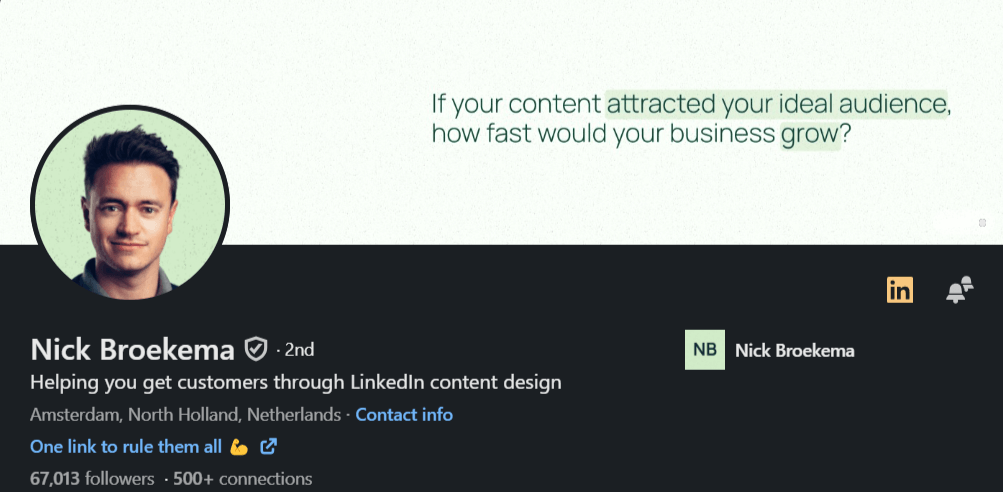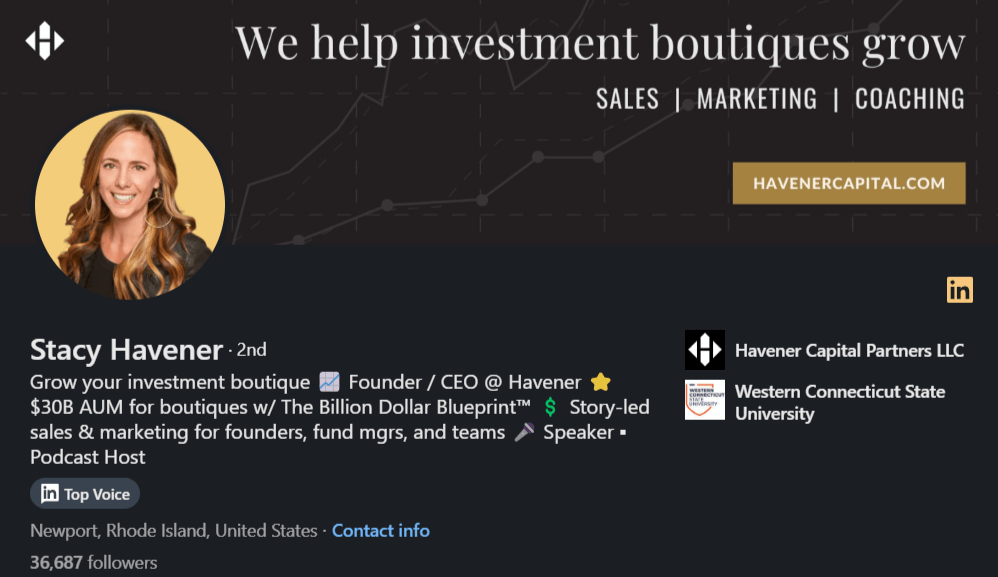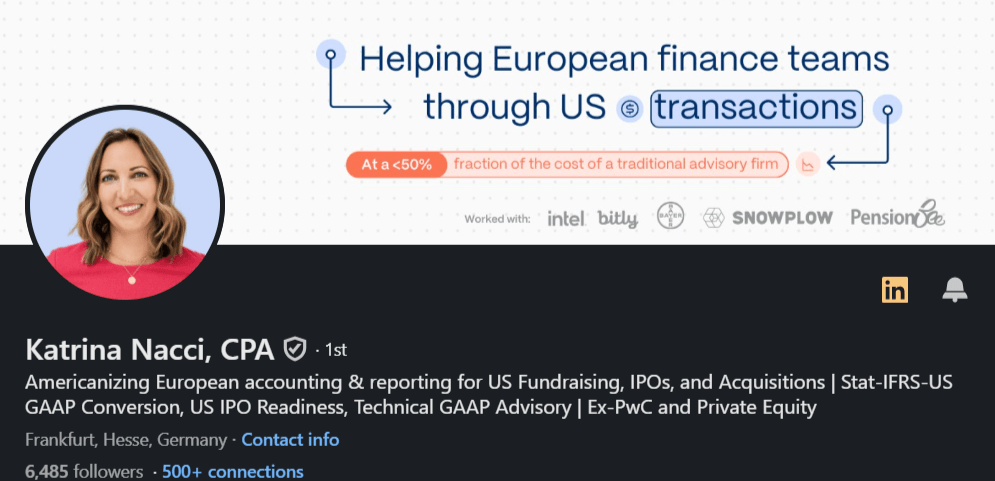🚀 TL;DR
- Solopreneurs take many forms, from creators and freelancers to coaches, consultants, and micro-agency owners.
- Each type highlights a different path to earning independently, whether through content, services, or teaching.
- Examples show how solo operators can build authority, attract clients, and generate sustainable income.
- Some models rely on personal expertise, others on building a community or leveraging digital platforms.
- The range of options demonstrates that solopreneurship isn’t one-size-fits-all — there’s a fit for different skills, interests, and lifestyles.
Most “solopreneur success stories” you read online showcase overnight successes that rarely exist in reality.
I know and mentor hundreds of solopreneurs who have built six and seven-figure businesses. Each took a different path but achieved similar results: financial independence, freedom, and the ability to build wealth.
A million-dollar solo business isn’t a myth, but it’s also not the point. You’d rather have a $400k business with 80% margins, no meetings, and full control.
In this article, I’ll introduce you to a few solopreneur examples—and real solopreneurs who’ve built these kinds of businesses. They’re practitioners who’ve developed systems, leverage, and unique positioning. As a result, it allows them to operate at scale without sacrificing their lives in the process.
1. The Business Mentor
The business mentor leverages their expertise from years of building and scaling their businesses to help others achieve similar results.
General business coaches—or bunk business coaches as I call them—often teach theory they’ve never practiced. But the best business mentors? They’ve “been there, done that” in a specific industry or business model.
The business mentor solopreneur serves high-value clients on retainer or through premium programs, creating a predictable income stream without needing a large audience or constant content creation.
The right business mentor won’t ask, “Can you scale to 7 figures?” Instead, they’d focus on “What has to be true for that to happen—and are you willing to do it?”
This question frames how real business mentors operate—they focus on practical systems rather than motivational talk.
Example of a business mentor: Ken Yarmosh (yours truly 👀)
I’ve built multiple seven-figure businesses as a solopreneur, starting in 2005 with a remote app development consultancy that eventually led to an exit.

Instead of retiring, I applied the systems and processes I developed to help other solopreneurs scale without traditional hiring models.
I genuinely believe that seven figures alone usually means one of three things: massive distribution, excellent product, or systems so tight you could disappear for a week and nothing breaks.
My solopreneur business model combines the following:
- A remote solopreneur mentoring program
- High-touch advisory services for founders
- Integrating as a Fractional COO for agencies
I built everything backward compared to what most coaches recommend. No marketing strategy. No content calendar. No course funnel. Just real results for clients that led to word-of-mouth referrals.
The key to my success has been focusing on implementation rather than information. My clients don’t just learn what to do—they build systems alongside me that run without their constant attention.
2. The Niche Consultant
While general consultants struggle to command premium rates, niche consultants who solve specific problems for specific industries can build seven-figure businesses without large teams.
The key to the niche consultant model is positioning yourself as the go-to expert in a clearly defined category.
They don’t offer generic services like “marketing” or “operations.” Successful niche consultants create their own category that leverages their unique combination of skills and experience.
This positioning allows them to work with fewer clients at higher rates, creating the leverage needed to scale revenue without scaling their workload.
Example of a niche consultant: Nick Broekema
Nick built a successful agency focused on branding and design before hitting a revenue ceiling. As a solopreneur, he was capped by time—the classic trap that prevents most service providers from scaling beyond six figures.

The breakthrough came when Nick repositioned himself (with my help 👋). Instead of competing as a general business mentor or branding consultant, he created a new category called “Content Design” that combined his agency experience with his background in branding and design.
This category creation strategy paid immediate dividends: “That really took off on LinkedIn. People adopted it pretty quickly. Prospects really liked it. Eventually, clients resonated with it,” explains Nick.
With his new positioning, Nick increased his rates and refined his offer to appeal to a more specific ideal client profile. Though the transition required some tweaking to make the offer compelling, the results speak for themselves.
The niche consultant model works because it creates clarity in a crowded market. When prospects can immediately understand the specific problem you solve, the entire sales and marketing process becomes easier.
3. The Executive Coach
Executive coaching has traditionally been reserved for corporate settings. However, solopreneurs have found ways to build lucrative practices by focusing on specific leadership challenges for specific types of clients.
Unlike general life coaches or business coaches, executive coaches work with leaders to improve their performance, develop their skills, and achieve specific professional objectives.
They work with a small number of high-value clients on retainer, executive coaches can build substantial revenue without the need for complex marketing funnels or large teams.
Example of an executive coach: Nausheen Chen
Nausheen Chen is a public speaking coach for founders and CEOs. She built her coaching practice by focusing on finding what I call “Lighthouse clients”—ideal clients who pay well and are a joy to work with.

This focus on quality over quantity allowed Nausheen to streamline her entire one-person business. Everything else fell into place when she knew exactly who she was serving.
Like many solopreneurs, Nausheen started with a single service offering. Working with a business mentor, she expanded to a portfolio of offers that created multiple entry points for clients and opportunities to serve them at different price points.
The executive coach model works because it focuses on delivering transformative results to a select group of clients. As a result, you can command premium rates while maintaining a manageable client load.
3. The Agency Owner
The term “agency” typically conjures images of a bustling office with dozens of employees. But many seven-figure agencies today are run by a single business owner with a network of contractors or a very small core team.
These “micro-agencies” focus on delivering specialized services to a narrow client base. It allows them to maintain the high-touch service of a boutique while achieving the stable revenue of a much larger operation.
The agency owner model differs from pure consulting because it delivers done-for-you services rather than just advice or guidance. This creates more operational complexity and revenue potential.
The key to scaling this model without burning out is creating systems and standardized processes that allow consistent delivery without your involvement.
Example of an agency owner: Stacy Havener
Stacy Havener founded and runs Havener Capital Partners, a sales/marketing form for investment boutiques that has scaled to seven figures without a traditional team structure. As both founder and CEO, she's built her business by developing specialized expertise in the investment sector.
What sets Stacy apart is her recognition that scaling her business required more than just working harder—it required working differently.

“I know what got me here, won't get me there. I believed Ken could help me rethink our offers, to work on scaling our biz,” says Stacey.
Like many successful solopreneurs, Stacy hit a plateau where her existing methods weren't enough to break through to the next level. This pattern—discomfort followed by transformation—is common among solopreneurs who’re unable to scale. But the ones that do? They embrace systems and frameworks that force them to rethink how their business operates.
One-person agencies use structured elements to create leverage that allows them to accomplish what typically requires a team. The solo agency model works when you focus less on growth for growth's sake and more on creating systems that deliver exceptional value efficiently.
4. The Community Builder
While many solopreneurs focus on one-to-one services, community builders take a different approach. They create valuable spaces where like-minded people can connect, share knowledge, and solve problems.
The community builder model represents the shift from selling your time to creating platforms where value is exchanged among members. But you’re the curator and facilitator rather than the sole provider.
This approach allows for a much greater scale than service-based models. Your income is not directly tied to the hours you work. Instead, it grows with the size and engagement of your community.
Example of a community builder: Justin Simon
Justin had accumulated significant knowledge about his industry but struggled with turning that knowledge into a scalable business model. Like many experts, he had a lot of the information in his head but didn’t know how to get it out there.

The breakthrough happened when he worked with me in my “Pitch to Win” cohort. Once he figured out how to scale his 1:1 content distribution offer—and had completely maxed it out, he decided to create a community.
The community was where he could help his target audience at a larger scale without always being directly involved—as one-on-one work would require.
The community builder model works because it addresses one of the biggest challenges most people face—not a lack of information, but a lack of implementation.
If you create a space where people can get feedback, accountability, and practical help, people will pay for the tremendous value you offer. That said, I would only recommend this model when you have really good distribution (go, figure, Justin does) and have sold out the premium part of your offers.
5. The Product Builder
While service providers must constantly trade time for money, product builders create assets that can generate revenue while they sleep.
Digital products—courses, templates, software, or tools—allow solopreneurs to package their expertise once and sell it many times, creating leverage that’s impossible with pure service models.
The most successful product builders don’t try to compete with mass-market offerings. Instead, they create highly specialized solutions for specific problems faced by specific audiences.
This focused approach allows them to charge premium prices and avoid the race to the bottom that happens in crowded marketplaces. It also requires less marketing spend, as their offerings naturally resonate with their target customers.
Example of a product builder: Matt Barker
Matt Barker is a LinkedIn ghostwriter with almost 167,700 followers on LinkedIn. He has spent 17+ years in a startup environment as a marketer—and has now moved into helping entrepreneurs understand how to use AI in their own business.

Initially, Matt operated a ghostwriting business that generated around $10-15,000 monthly, projecting to just over six figures annually. While profitable, this service-based model tied his income directly to his time—a common limitation for solopreneurs.
“I was still kind of stuck in that freelancer mindset,” Matt explains. “I wasn't really that confident with sales processes and systems and operations.”
Matt recognized these limitations and wanted to build more scalable offers—after maximizing his active income from 1:1 services.. The timing was strategic since he already had distribution (his large LinkedIn audience) and proven expertise (his successful ghostwriting business).
So, he used this opportunity to develop a portfolio of offers and create a list of products to serve multiple customers simultaneously.
Ultimately, you need to remember that there’s no such thing as passive income. If you want to turn your product and service-based business into a profitable business, you need to build an online presence to keep fueling your growth.
6. The Content Creator
While many dream of becoming YouTube stars or Instagram influencers, the solopreneurs who build seven-figure content businesses take a more strategic approach. They focus on quality over quantity and specific value over viral appeal.
These content creators build businesses around their expertise rather than their personalities. This also means they don’t rely on advertising revenue alone. Instead, they create diverse revenue streams through premium content, affiliate partnerships, and their own products or services.
Example of a content creator: Jay Clouse
Jay built his content business from the ground up, focusing not on becoming famous but on creating genuinely valuable resources for a specific audience of independent creators.

Unlike many content creators who chase trends and social media platforms, Jay built his strategy around a consistent core theme: creator economy. This focused approach allowed him to build a loyal audience that actively sought out his content rather than passively consuming it.
Jay’s revenue comes from multiple streams:
- A newsletter
- Online courses
- Affiliate partnerships/sponsorships
- Membership community
The content creator model works by building cumulative assets rather than trading time for money. Each piece of content becomes part of a growing body of work that attracts new audience members and potential customers.
7. The Fractional Advisor
Many businesses these days look to access high-level expertise without hiring full-time executives. That’s why they work with fractional advisors to fill those gaps.
Fractional CTOs, CFOs, CMOs, and COOs provide executive-level strategic guidance without the commitment and cost of a full-time hire.
Consultants typically focus on specific projects or problems, but fractional advisors take ongoing responsibility for results in their area of expertise. As a result, they become integrated members of their clients’ leadership teams.
Example of a fractional advisor: Katrina Nacci
Katrina built her fractional advisory business around a niche problem: Cross-border accounting and reporting (US/Europe).

The core problem Katrina addresses is clear. CFOs leading international operations are overwhelmed by cross-border transactions and technical accounting challenges. It’s an excruciating problem that very few solve—and that’s precisely how Katrina built her offer.
She took her US/European cross-border accounting expertise and offered direct, tactical advice tailored to a specific market. As a result, she made the whole process manageable for CFOs—and their teams. Now, her clients don’t need to hire expensive advisory firms, and she can continue to offer value that very few offer in her space.
Solopreneuership is ultimately about building leverage
A clear pattern separates those who reach seven figures from those who remain stuck in the feast-or-famine cycle of freelancing. Successful solopreneurs think differently about scale and leverage.
None of them scaled by working longer hours or hiring dozens of employees. Instead, they found ways to deliver more value without proportionally increasing their time investment.
Their success isn’t about luck or genius or even hustle.
It’s about designing businesses with intention, focusing on the right clients, creating systems that scale, and building leverage through assets rather than time.
The question remains: How are you going to design your solopreneur journey?

